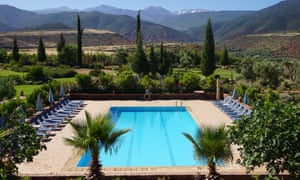
Nov 02, 2018 The vibrancy found in the country’s cities is matched by life in the Middle Atlas Mountains, where visitors can swap people watching. Atlas Mountains, Morocco. Kasbah Bab Ourika stands on a hilltop at the apex of the Ourika valley, in the Atlas Mountains. A one-hour drive from Marrakech’s International Airport, it looks down to the river, green fields and groves of olives, oranges and lemons, and up to the dazzling snowy mountain peaks.
Map of Northwest Africa with the Anti-Atlas in the lower left corner.CountryGeologyClimbingdriveThe Anti-Atlas (: الأطلس الصغير,: Aṭlas Ameẓyan), Lesser Atlas or Little Atlas is a mountain range in, a part of the in the northwest of. The Anti-Atlas extends from the in the southwest toward the northeast, to the heights of and further east to the city of, altogether a distance of approximately 500 km. The range borders on the to the south.The Anti-Atlas is a desolate world of rocky outcrops and lunar landscapes where the contrasts are extreme. Most of the land is dry and barren, but water gathers and runs in some remote places, forming clear basins. Villages in the area are limited to a few small houses surrounded by palm trees.In some contexts, the Anti-Atlas is considered separate from the Atlas Mountains system, as the term 'anti' implies.
Contents.Geography The summits of the Anti-Atlas reach average heights of 2,500–2,700 m (8,200–8,900 ft), with a few peaks reaching higher. To the north lies a plateau at 1700–1800 m in height. To the south lie the Sahara highlands at approximately 700 m. On the heights of, the is cut through by the, opening towards the south. The range is strongly fissured, particularly in a southerly direction.The Anti-Atlas area is a traditionally region, inhabited by the group.
It is sparsely inhabited and there are no large cities in the area. The main town is, which has been described as 'Morocco's Berber heartland'. There are in certain areas of the range. Subranges The eastern prolongation of the Anti-Atlas is the range. The is its northern prolongation, connecting with a section of the. The summit of Jbel Sirwa, of volcanic origin, reaches 3304 m. The is a much lower range running along the southern side of the Anti Atlas.
Jebel Sirwa, highest point in the Anti-Atlas range. Origins The basement rock of Africa (the ) was formed in the (approximately 4,500 to 550 million years ago), and is much older than the Atlas mountains.

The Anti-Atlas range developed even later.The Anti-Atlas range formed in the (300 million years ago), as a result of continental collisions. North America, Europe and Africa were connected as part of, and, which ground against one another to create the former. Evidence shows that the Anti-Atlas mountains were originally formed as part of the that also formed the, formed when Gondwana (including Africa) and Euramerica (America) collided. There are indications they were once a chain of mountains far higher than the are today. The Ameln valleyMore recently, in the and Periods (66 million to 1.8 million years ago), the remaining mountain chains that today comprise the Atlas were uplifted as the land masses of Europe and Africa collided at the southern end of the. Erosion continued to reduce the Anti-Atlas range so that it is today less massive than the High Atlas range to the north.Climate In the Anti-Atlas, the precipitation annually is typically below 200 mm, while the climatic conditions on the north and west slopes are locally more wet and agriculturally favorable.
Climatically, the mountains are separated from the 's influence by the to its north, and therefore they belong to the Saharan climate zone. The driest area is the. Project spark pc.
Flora In the least dry areas to the west and the north, much of the land is covered with, and other low-water-demand plants, such as. The quilt-like cover is endangered by, and in the south little but thorn shrubs remain. The transition to the desert is gradual towards the south.The is growing there, and uses as.Human geography The Anti-Atlas area is a traditionally region, inhabited by the group.
It is sparsely inhabited and there are no large cities in the area. The main town is, which has been described as 'Morocco's Berber heartland.'
Often the distances between one village and another are great, without any human presence in between. There are in certain areas of the range.